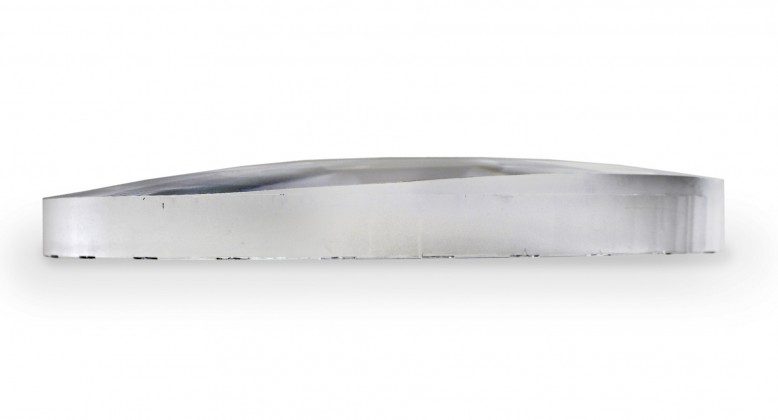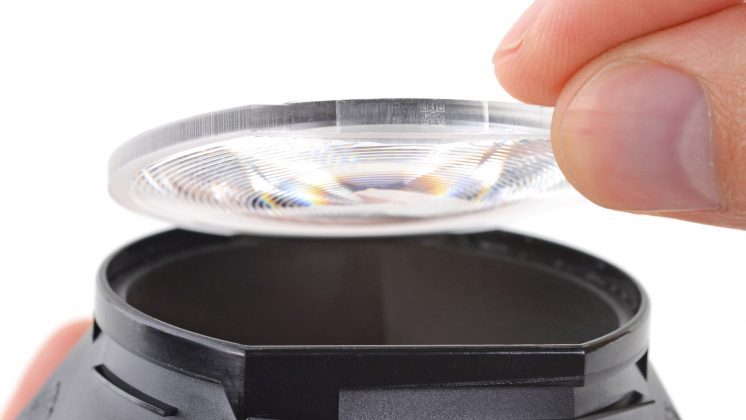Nearly two years ago, Wearality created a unique Fresnel lens for VR headsets offering a claimed 150 degree field of view. The company successfully funded a VR viewer featuring the lens called Wearality Sky through Kickstarter. The company recently revealed a new and improved lens, but this time around they intend to act as a supplier rather than directly selling a viewer to consumers.
While at VRTO in June, I met with David A. Smith, the CTO and founder of Wearality. Smith showed me a prototype of the new lens the company is developing. Just from holding it, it was clear that it was extremely thin and light, significantly thinner than the lenses found in tethered VR headsets today. The lens is even thinner than a quarter.
A thinner lens means less weight, but Wearality also says that the optical properties of the lens can create much smaller headsets. One of the main reasons why today’s headsets are so big is because the lenses typically need to be a significant distance from the screen in order to focus the screen properly for your eye. With Wearality’s lens, I observed that it only required somewhere around a finger’s thickness in distance between the lens and the screen for proper focus. This could enable a headset form-factor that’s closer to the size of ski goggles, which would be a big step forward over today’s headsets.
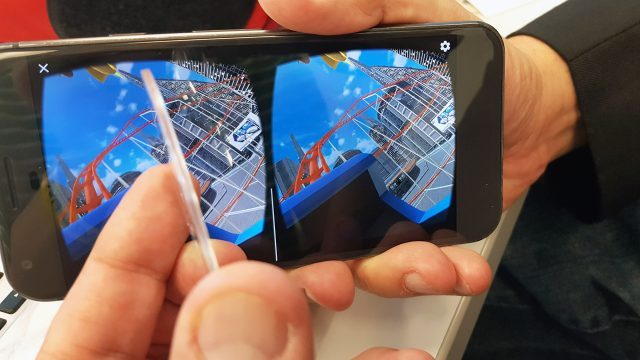 Still, the image through the lens needs to look good, otherwise everything else is pointless. To investigate that, I held up the lens up in front of my smartphone. The lens wasn’t built into a VR viewer, so the conditions were a little shaky and unreliable, but what I saw was very promising.
Still, the image through the lens needs to look good, otherwise everything else is pointless. To investigate that, I held up the lens up in front of my smartphone. The lens wasn’t built into a VR viewer, so the conditions were a little shaky and unreliable, but what I saw was very promising.
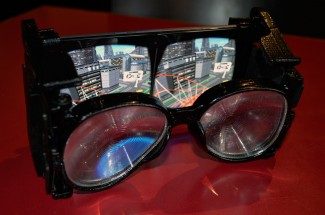
When we saw the company’s prior Wearality Sky lenses, we noticed that trade-offs were necessary in order to reach the very high FOV in a thin lens. The trade-off was mainly that we got a ‘god ray’ artifact common in the Oculus Rift and HTC Vive, but perhaps to an even harsher degree. This effect comes as an artifact of having Fresnel ridges. There was also a sort of interference pattern that emerged from the ridges, manifesting as concentric rings in the view. In the new lens, I saw little of these fresnel artifacts in comparison the Sky. In comparison to the Rift and Vive, it seemed about the same amount or less. When considering chromatic aberration, spherical aberration, and other effects, the visuals didn’t seem worse than what was in the Sky, at least to my eyes. But the clarity still felt a bit lacking in a way that I couldn’t quite pinpoint at the time. It might have been due to a smaller eyebox (or ‘sweet spot’) which I couldn’t align with very carefully given that I was holding the lens and display by hand.
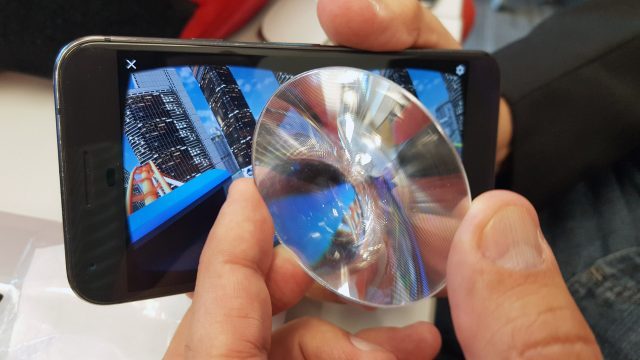 It’s early to say without more careful testing, but if what I saw turns out to be representative of the lens’ performance in a VR headset, producing a lens that’s almost a straight upgrade from the company’s previous lens is impressive.
It’s early to say without more careful testing, but if what I saw turns out to be representative of the lens’ performance in a VR headset, producing a lens that’s almost a straight upgrade from the company’s previous lens is impressive.
What Smith tells us is that they’ve learned from their previous design, and that their new ‘single lens’ naturally eliminates most of the Fresnel artifacts by not having light bounce around inside what would otherwise be a two element lens (the Sky’s lenses were designed like two lenses in one). But according to common logic, that should produce other problems since now we’re relying on a single lens to do all the magnification and focusing. Smith however teases that they have another way of fixing aberrations that he couldn’t disclose.
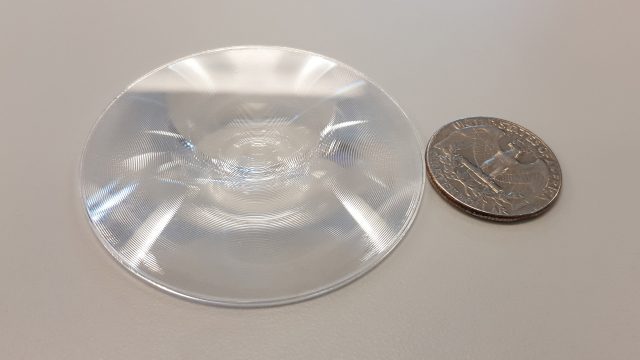 Maybe the flat shape of the lens has something to do with their secret sauce, but in any case, another aspect of this lens that needs to be taken into account is that it necessarily magnifies the image even more than the previous lenses. With my smartphone’s screen, the size of the lens itself limited the FOV rather than the display. At the same time, the pixels appeared horrifically huge, so we’ll need a display that’s better optimized in size and resolution for these lenses. Perhaps microdisplays would fit well.
Maybe the flat shape of the lens has something to do with their secret sauce, but in any case, another aspect of this lens that needs to be taken into account is that it necessarily magnifies the image even more than the previous lenses. With my smartphone’s screen, the size of the lens itself limited the FOV rather than the display. At the same time, the pixels appeared horrifically huge, so we’ll need a display that’s better optimized in size and resolution for these lenses. Perhaps microdisplays would fit well.
Wearality’s latest lens seems to be an impressive development that could be a significant step forward, but there are still many questions left on the table before we can be sure. Since they’re only developing it for potential business partners, there are no guarantees if we’ll even see it as consumers. We can only hope that the lens, or something better, will appear in the next gen consumer headsets. And hopefully, this development signals that next gen headsets will be notably slimmer than they are today.



